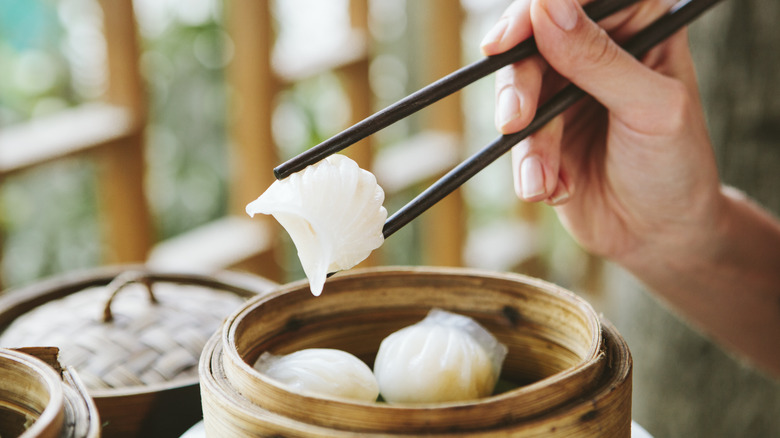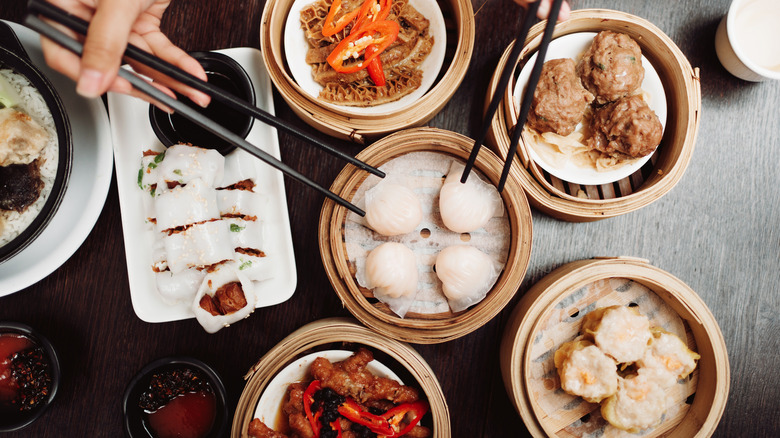How Do Har Gow Dumplings Become So Translucent?
You learn a lot about people when you go out for dim sum. When faced with endless options of bite-sized food served on steamer baskets or small plates, how do they react? Do they go for the greatest hits (har gow, siu mai, char siu bao, egg tart), do they order something divisive like chicken feet, or do they simply wait for others to lead?
Irrespective, har gow is a perennial favorite among dim sum lovers because of the fresh, sweet, and slightly crunchy texture, along with the shrimp and bamboo shoot filling flavored with ginger, white pepper, and pork fat. The skin has a delicate, translucent appearance, and you must be able to at least see the outline of the chunky filling inside this parcel.
There are two reasons for the translucent har gow skin. One is the use of tapioca starch, and the other is the use of boiling water to make the dough.
Use tapioca flour and boiling water in the dough
The dough used to make har gow skin includes wheat starch, tapioca starch, or a combination of these. These starches contribute to the translucent appearance of the har gow skin in ways that wheat-based dough cannot. The second contributing factor to the translucent appearance is the use of boiling water rather than cold water to prepare the dough, which activates the starches and forms a smooth and stretchy dough.
Once the dough is cool enough to touch, knead and rest it and then divide it into small-sized balls. Roll it out on a floured surface until it is almost paper thin. Skilled dumpling makers know how to do this by applying just the right amount of pressure and skillfully thinning the dough. The rest of us might flounder a bit.
Next, place the fillings on the har gow skin and start pleating it. This is another tricky step because the skins are delicate and must be handled carefully. Traditionally, the number of pleats on the har gow shows the chef's experience level, and they would aim for a minimum of seven.
If that is beyond your level of experience for now, simply fold it into a half-moon shape and use a fork to press it together so that it holds together and has some texture.
Steam har gow in a bamboo steamer
Har gow is traditionally steamed rather than boiled or pan-fried. Steaming allows it to cook gently and evenly without causing the skin to become too opaque.
To steam the har gow, it would be best to use a bamboo steamer lined with baking paper (or cabbage leaves) so that it does not stick to the steamer. Remember that the har gow will expand slightly, so do not over-crowd the steamer. Take a leaf from dim sum restaurants that usually have three har gow per bamboo steamer basket. It only takes seven to eight minutes to steam the har gow, during which the skin will become more translucent, yet stretchy and strong enough to hold the fillings.
This translucent quality makes har gow slightly different from dumplings in other cuisines, such as tortellini and momo, which are opaque. It is closer to Vietnamese's banh bot loc, which is a pork and shrimp dumpling where the translucent skin is also made with tapioca flour.
All the more reason to actively seek out tapioca flour.


